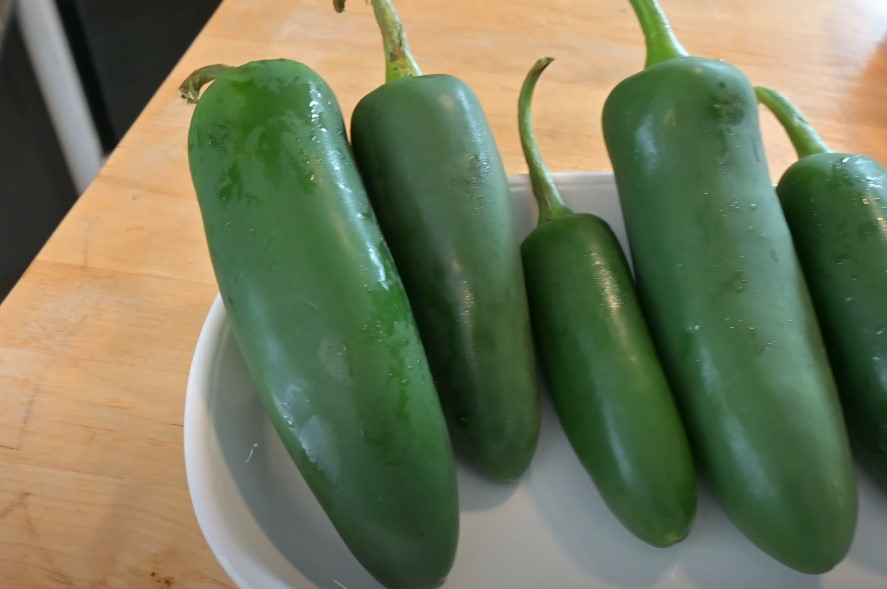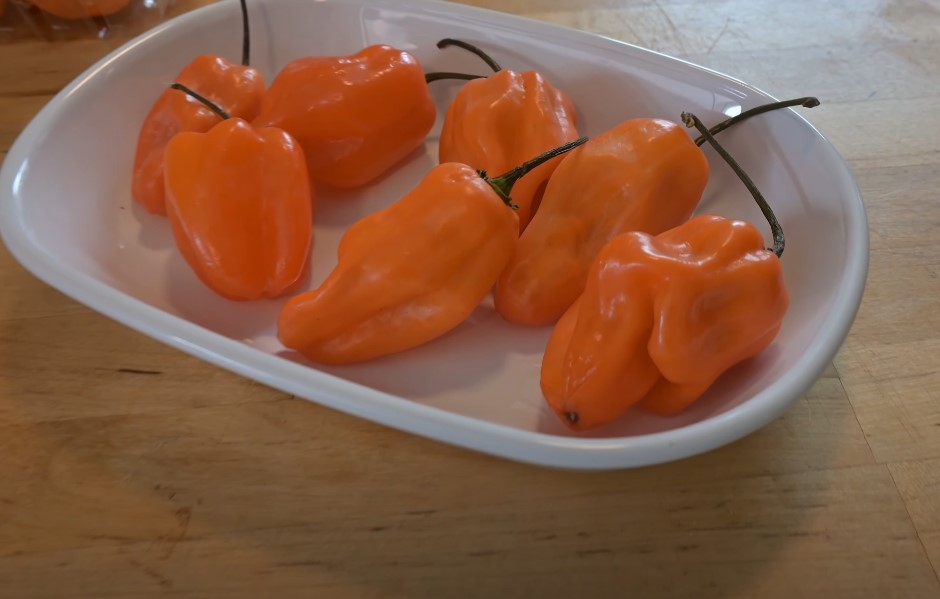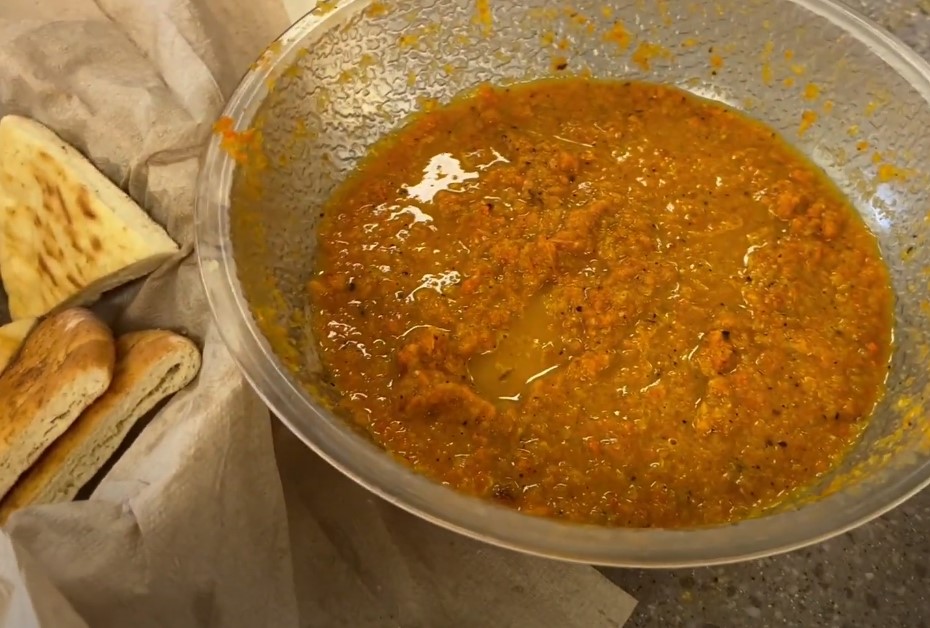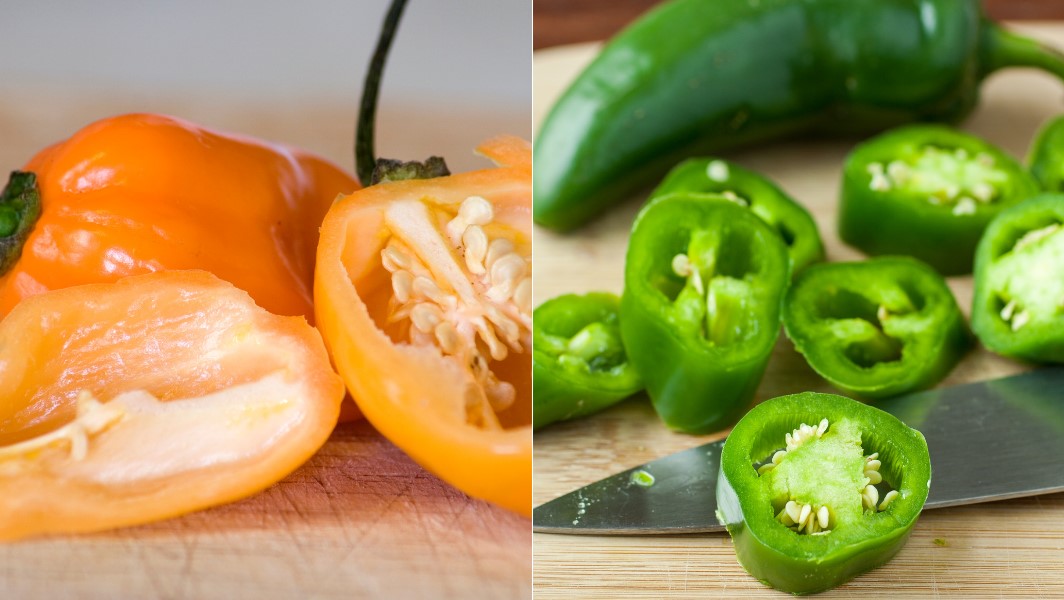Have you ever found yourself standing in the produce aisle, eyeing those vibrant green jalapeños and fiery orange habaneros, wondering which one would add the perfect kick to your next dish?
If you’re a fan of spicy food like me, you’ve probably pondered this spicy showdown.
Origin and Characteristics

Jalapeños hail from Mexico and have become a beloved ingredient worldwide.
They’re typically 2-3 inches long, with a smooth, green skin that can turn red if left to ripen fully. You’ve likely enjoyed them sliced on nachos, stuffed with cheese, or diced into salsas.
Heat Level: The Scoville Scale
The spiciness of peppers is measured using the Scoville Heat Units (SHU) scale.
Jalapeños typically range from 2,500 to 8,000 SHU. This heat level offers a noticeable kick but is generally considered manageable for most people.
It’s the kind of heat that adds excitement to your food without overwhelming your taste buds.
Flavor Profile
Beyond the heat, jalapeños have a fresh, grassy flavor with a hint of sweetness.
This makes them versatile for various dishes, adding both spice and depth without overpowering other ingredients.
Enter the Habanero

Now, let’s talk about the habanero—a small pepper that commands serious respect.
Origin and Characteristics
Habaneros also originate from the Amazon region but are now widely cultivated in Mexico’s Yucatán Peninsula. They are smaller than jalapeños, about 1-2 inches in length, and come in vibrant colors like orange, red, and even chocolate brown.
Heat Level: Turning Up the Scoville Scale
Hold onto your taste buds! Habaneros range from 100,000 to 350,000 SHU. That’s up to 140 times hotter than a mild jalapeño. If you’ve ever bitten into a habanero unprepared, you know it’s an experience you won’t forget.
Flavor Profile
Despite their intense heat, habaneros are known for their fruity and citrusy flavor. They add a unique taste to dishes, combining sweetness with spice, which is why they’re popular in hot sauces and marinades.
The Heat Showdown: Jalapeño vs. Habanero
So, which pepper packs more heat? If we’re looking at the numbers, the habanero clearly takes the crown.
Personal Experience with Jalapeños
When you bite into a jalapeño, you’ll feel a warm heat that builds up but usually doesn’t cross into unbearable territory. It’s perfect for those who enjoy spice but still want to taste the other flavors in their meal.
Tackling the Habanero Heat
On the other hand, a habanero hits hard and fast. The heat can be intense, causing a burning sensation that can linger. It’s the kind of spice that can make your eyes water and your forehead sweat. If you’re not accustomed to spicy foods, a habanero can be overwhelming.
Comparing the Heat
- Jalapeño: 2,500–8,000 SHU
- Habanero: 100,000–350,000 SHU
The habanero is significantly hotter. To put it into perspective, it’s like comparing a gentle jog (jalapeño) to a full-on sprint (habanero).
How to Handle the Heat Safely
If you’re feeling adventurous and want to try cooking with habaneros, here are some tips to handle the heat:
- Wear Gloves: Always wear gloves when handling habaneros to avoid skin irritation.
- Avoid Touching Your Face: Keep your hands away from your eyes and face until you’ve thoroughly washed them.
- Use in Moderation: A little goes a long way. Start with small amounts to control the heat level.
- Remove the Seeds and Membranes: This is where most of the capsaicin (the compound that makes peppers hot) is concentrated.
- Have Dairy On Hand: Milk, yogurt, or sour cream can help neutralize the heat if things get too spicy.
Cooking Ideas for Both Peppers
Jalapeño Recipes
- Stuffed Jalapeños: Fill them with cheese and bake for a spicy appetizer.
- Jalapeño Poppers: Breaded and fried, these are a party favorite.
- Salsa: Add diced jalapeños for a fresh kick.
Habanero Recipes

- Hot Sauces: Create your own fiery sauce to use sparingly.
- Marinades: Infuse meats with a habanero marinade for a spicy twist.
- Fruit Salsas: Combine habaneros with mango or pineapple for a sweet and spicy relish.
Deciding Which Pepper to Use
Your choice between jalapeño and habanero depends on your heat tolerance and the flavor profile you’re aiming for. Also, consider tabasco pepper when cooking.
- For Mild to Moderate Heat: Stick with jalapeños. They’re user-friendly and add a pleasant warmth to dishes.
- For Intense Heat Lovers: Go for habaneros if you’re seeking a serious spice challenge and a unique fruity flavor.
Final Thoughts
So, when it comes to which pepper packs more heat, the habanero is the clear winner (or should we say, the hottest contender). But remember, with great heat comes great responsibility! Use habaneros wisely to enhance your dishes without overpowering them.
Next time you’re in the mood to spice things up, you’ll know exactly which pepper to choose. Whether you opt for the approachable heat of the jalapeño or the fiery punch of the habanero, your taste buds are in for an adventure.

